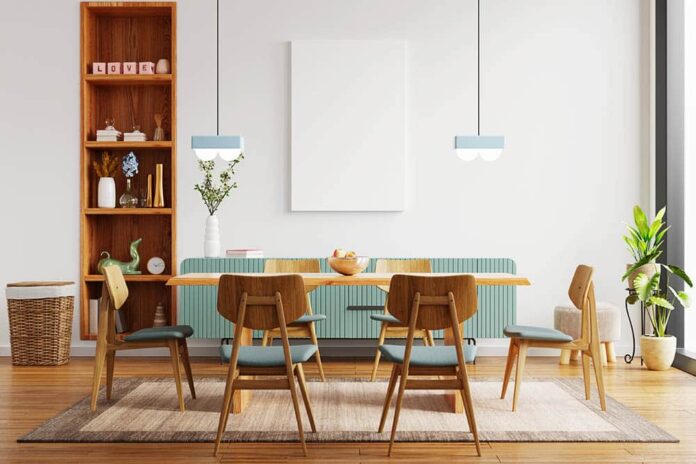Are You Ready to Transform Your Dining Experience with the Perfect Lighting for Your Dining Room?
Dining rooms are an essential part of every household, a place where we share meals and make memories with our loved ones. But did you know that the lighting in your dining room can significantly impact your overall dining experience? The right lighting can set the mood, enhance the ambiance, and even make the food look more delicious.
In this article, we will explore how you can transform your dining experience with the perfect lighting for your dining room. We will cover everything from choosing the right bulbs to installing the right fixtures to make your dining room a welcoming and comfortable space.
Choosing the Right Bulbs
The first step towards perfect lighting for your dining room is to choose the right bulbs. There are various types of bulbs available in the market, each with its own color temperature and intensity.
• Color Temperature: Color temperature refers to the warmth or coolness of light, measured in Kelvin. Bulbs with a lower color temperature (2700K-3000K) emit a warm, yellow light that creates a cozy and inviting ambiance. Bulbs with a higher color temperature (4000K-5000K) emit a cool, white light that is ideal for task lighting.
• Bulb Intensity: The intensity of light is measured in lumens. The higher the lumens, the brighter the light. For a dining room, it’s essential to choose bulbs that emit 800-1000 lumens, which is bright enough to see your food without being overwhelming.
The Power of Dimmers
Dimmer switches are a great addition to any dining room, as they allow you to adjust the brightness according to your needs. Dimmers can create a warm, intimate ambiance for a romantic dinner or provide bright lighting for a family meal. Installing dimmer switches is a quick and easy way to transform the atmosphere of your dining room.
Types of Lighting Fixtures
Choosing the right lighting fixtures is just as important as choosing the right bulbs. There are various types of lighting fixtures available, each with its own purpose and style.
• Chandeliers: Chandeliers are the most popular lighting fixture for dining rooms. They create a grand and elegant ambiance and serve as a statement piece in the room.
• Pendant Lights: Pendant lights are versatile and can be used to create different lighting effects. A single pendant light above the dining table can create a cozy and intimate ambiance, while a group of pendant lights can provide bright and evenly distributed lighting.
• Wall Sconces: Wall sconces are ideal for smaller dining rooms as they take up less space than chandeliers and pendant lights. They provide a warm and inviting ambiance and can be used to highlight artwork or architectural details.
The Art of Layering Lighting
Layering lighting is the process of combining different lighting fixtures to create a cohesive and balanced lighting design. The three types of lighting that come together to create a layered lighting design are ambient, task, and accent lighting.
• Ambiance Lighting: Ambiance lighting refers to the overall lighting of the room. It creates a warm and welcoming ambiance and can be achieved through chandeliers or pendant lights.
• Task Lighting: Task lighting provides direct and focused lighting for specific tasks, such as reading or working on a laptop. It can be achieved through wall sconces or table lamps.
• Accent Lighting: Accent lighting is used to highlight artwork or architectural details. It can be achieved through spotlights or picture lights.
By combining these three types of lighting, you can create a layered lighting design that enhances the ambiance and functionality of your dining room.
The Importance of Placement
The placement of lighting fixtures is crucial to achieving the desired lighting effect. When placing lighting fixtures in your dining room, you should consider the size of the room, the height of the ceiling, and the location of the dining table.
• Chandeliers: Chandeliers should be centered above the dining table and should be hung 30-36 inches above the table. The size of the chandelier should be proportional to the size of the table.
• Pendant Lights: Pendant lights should be hung 30-36 inches above the table and should be spaced 18-24 inches apart. The size of the pendant lights should be proportional to the size of the table.
• Wall Sconces: Wall sconces should be placed on either side of a mirror or artwork. They should be placed at eye level and should be spaced 6-8 feet apart.
In Conclusion
Transforming the lighting in your dining room can significantly impact your overall dining experience. By choosing the right bulbs, installing the right fixtures, and layering your lighting, you can create a warm and inviting ambiance that enhances the mood and makes the food look more delicious.
When designing your dining room lighting, it’s essential to consider the size of the room, the height of the ceiling, and the location of the dining table. The placement of lighting fixtures can significantly impact the lighting effect and should be carefully considered.
By following these tips and advice, you can transform your dining experience with the perfect lighting for your dining room. Whether you’re hosting a romantic dinner, a family meal, or a dinner party, the right lighting can make all the difference.
- Revolutionizing Governance: Unveiling the Untold Strengths of Progressive Governments! - 23 de junio de 2023
- Revolutionary Unity Unveiled: Political Parties Bridge Ideological Divide, Pave the Way for Progressive Change - 15 de junio de 2023
- Revolutionizing Democracy: Unveiling the Futuristic Voting System that Transcends Borders! - 15 de junio de 2023

